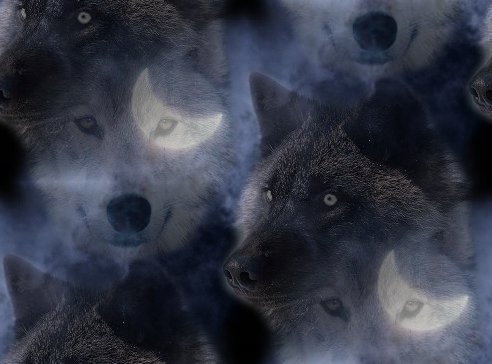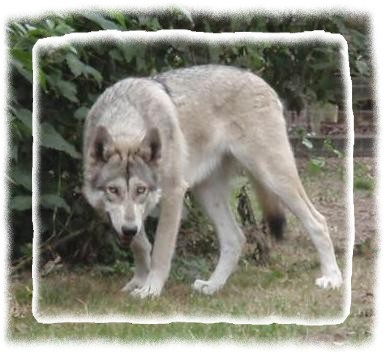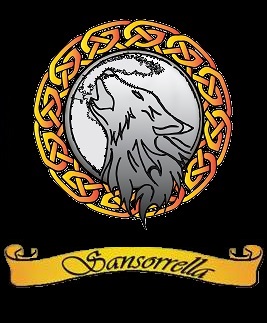
The Independent Inquiry into Dog Breeding


|
The Independent Inquiry into Dog Breeding by Patrick Bateson: Download the full pdf file here: This quote sums up what Anglo Wulfdog breeders are doing: "The larger breeders can play very important roles in breeding away from poor health conditions that have become established in a breed. When enough genetic variation exists in a breed, it is possible to select individuals for mating that do not carry the defect. If not, outcrossing to a different breed should not be regarded as an abomination. Outcrossing can sometimes carry health risks, but several cases have established that once the out-crossed puppies are obtained, artificial selection can ensure that healthy dogs with the desired features of the breed are rapidly recovered."
This is an extract from the report, for those of you who don't have time to read the whole thing. It backs up what the Anglo Wulfdog breeders have been saying for a very long time. Chapter 3,
Genetics and Inbreeding The genetics of inbreeding is reviewed.
Animals that are inbred are less likely than optimally outbred animals
to survive and less likely to reproduce. Inbreeding can result in
reduced fertility both in litter size and sperm viability, developmental
disruption, lower birth rate, higher infant mortality, shorter life
span, reduction of immune system function, and increased frequency of
genetic disorders. 3.1 Any
thoughtful breeder of dogs should be concerned about the potentially
adverse effects of inbreeding, but breeders are typically faced with a
dilemma. Their impulse is typically to go for purity in order to fix
desirable qualities and, if that means mating two dogs that are closely
related, desire for purity often wins over any fears about inbreeding
too much. The conflict between preserving desirable characteristics and
avoiding the potentially unfavourable outcomes that may accompany
inbreeding is real. Before exploring this dilemma any further, it is
worth clearing up some common confusions. 3.2 Some
breeders will tell you that they are not inbreeding, they are ‘line
breeding’. What is meant by this is that the breeder is carefully
selecting mates on the basis of a detailed knowledge of their genealogy
and their family’s breeding history. Sometimes this is done to avoid
perpetuating a recognisable inherited disease. More usually they are
choosing mates carefully to generate, it is hoped, prize-winning
characteristics. I shall have more to say about both these actions by
breeders in Chapter 6, but either way, if the breeder mates, say,
grandfather with granddaughter, he or she is inbreeding and doing so to
a marked extent. 3.3 If
inbreeding versus line breeding is a distinction without a difference,
another confusion arises where two different ideas have been run
together, namely inbreeding and incest. Incest is a
culturally-transmitted prohibition which, in my view, should be applied
exclusively to humans. The reluctance to mate with a close relative is
an inhibition found in many other animals apart from humans (Bateson,
2004). Incest taboos may have arisen indirectly from inbreeding
inhibitions, but the taboo is often applied to individuals who are not
genetically related. The back of the Church of England’s Book of Common
Prayer states, among other restrictions, that a man may not marry his
wife's father's mother or his daughter's son's wife. The mind boggles at
the possibility, but clearly no genetic relationship is entailed here. 3.4
Unquestionably inbreeding can lead to a loss of biological fitness. The
animals in the inbred lineage are less likely to survive and less likely
to reproduce than animals in more outbred lineages. This has been
demonstrated many times in well-studied, naturally outbreeding species.
Inbreeding can result in reduced fertility both in litter size and sperm
viability, developmental disruption, lower birth rate, higher infant
mortality, shorter life span, increased expression of inherited
disorders and reduction of immune system function. The immune system is
closely linked to the removal of cancer cells from a healthy body (Smyth
et al., 2006), so reduction of immune system function increases the risk
of full-blown tumours. Many of the effects of inbreeding have been found
in isolated populations of wolves, the wild ancestors of domestic dogs,
with detrimental effects (Laikre & Ryman, 1991). Severe inbreeding
depression has been documented in Scandinavian wolves that had passed
through an extreme bottleneck (Liberg et al., 2005). During their first
winter after birth the number of surviving pups per litter was strongly
and inversely correlated with how inbred were the pups. The more inbred
they were, the less likely were they to survive. Given what happens in
wolves, domestic dogs should be no exception to the rule that breeders
should avoid close inbreeding as much as possible. 3.5 Most genes
of sexually reproducing species come in pairs. Each member of the pair
is referred to as an allele by geneticists. Most genetic mutations, if
they have any effect at all, tend to reduce or sometimes even remove a
gene's function. Having genes in pairs is therefore a good thing because
one good copy is usually enough, problems only arising when the members
of a pair are the same (or homozygous) and both an individual's copies
are defective or, in rarer cases, where the defective gene is dominant.
Defective gene copies that only reduce health when a good copy is absent
are called 'deleterious recessives' and are generallyrare, making it
extremely unlikely that their effects are felt. However, when two
closely related individuals mate, the resulting offspring can inherit
the same gene copy from a single recent ancestor. If that copy is a
deleterious recessive, the offspring may be unhealthy. In this way
inbreeding can expose latent genetic problems by increasing the chance
that an individual carries two identical, defective copies of a gene.
(Inbreeding also has other effects that are described below.) When
animal breeders wish to produce pure genetic lines, as they sometimes
do, for example in laboratory animals, they will mate brother with
sister generation after generation. Most lines die out due to the
exposure of deleterious recessives that are normally hidden. However,
any healthy lines that survive are likely to have lost many of the
deleterious recessive genes they started with, a process known as
genetic purging. Purging can occur in natural populations that are
reduced to very low numbers forcing them to inbreed, and may account for
why sea mammals, that went to the brink of extinction, have recovered
remarkably well (Clapham et al., 1999). 3.6
Conservation is a high priority for Zoo Directors and Curators concerned
with protecting rare species. Rarity may arise because the world
population is small or because importing that species from the wild is
illegal. Either way, this means that zoo personnel and, for that matter,
wildlife managers need to keep a sharp eye on inbreeding and to be well
informed about conservation genetics. Many good text-books have been
written on the subject (e.g. Frankham et al., 2002). 3.7 Massive
improvements in molecular techniques have meant that it has become
easier to characterise the effects of inbreeding (Lindblad-Toh et al.,
2005). When one gene is responsible for a genetic defect that gene can
be identified. I shall return to the implications of these advances in
Chapter 6, but a word of warning is required here. If genes interact
with each other or with the environmental conditions in which the animal
is kept, then the benefits of DNA analysis to the breeder will be much
less. 3.8
Heritability is a concept used by geneticists and can be thought of as
the extent to which, for any given character, offspring resemble their
parents. Heritability is important in selective breeding programs
because traits with low heritability are much less responsive to
selection. In population genetics high heritability means that the
additive variation due to the genes is high. In this narrow sense, the
measure is indicative of the extent to which the variation in the
population is due to variation in genes considered independently of
their interactions with other genes at the same or at different loci.
More broadly, heritability refers to the ratio of the spectrum of
differences in a characteristic due to genetic variation to the total
spectrum of the phenotypic trait in the population. A trait has high
broad sense heritability in a population to the extent that the existing
variation for that trait in the population is due to genetic variation.
None of these definitions refers to the characteristics of an individual
since they all relate to traits found in populations of individuals.
3.9 If
statistical variance in a trait is entirely due to variability in the
genes, broad sense heritability is 1.0; if it is entirely due to the
influence of the environment, broad sense heritability is 0.0. Behind
the deceptively plausible ratios lurk some fundamental problems. For a
start, the heritability of any given characteristic is not a fixed and
absolute quantity. Its value depends on a number of factors, such as the
particular population of individuals that has been sampled. For
instance, if weights were measured only among well-fed dogs, then the
total variation in weight would be much smaller than if the sample also
included dogs that were small because they had been undernourished. The
heritability of weight will consequently be larger in a population of
exclusively well-nourished dogs than it would be among dogs drawn from a
wider range of environments. Thus, the heritability of weight is likely
to be lower in, say, purebred Labradors, where most of the genes
influencing weight are similar, compared with a more heterogeneous
population where, say, Labradors and Fox Terriers are allowed to
interbreed. 3.10 The most
serious weakness with heritability estimates is that they rest on the
assumption that genetic and environmental influences are independent of
one another and do not interact. The calculation of heritability assumes
that the genetic and environmental contributions can simply be added
together to obtain the total variation. In many cases this assumption is
clearly wrong and an overall estimate of heritability has no meaning,
because the effects of the genes and the environment do not simply add
together to produce the combined result. This has important implications
for the advice that should be given to breeders. 3.11 Estimated
breeding values (EBVs) describe the relative genetic value of each
member in a breeding population. They can also be used as a basis for
choosing which animals are the best candidates to select for breeding to
produce the next generation of offspring. Livestock and plant breeders
have used estimated breeding value techniques for years to obtain
genetic improvement in their breeding lines. The values are usually
applied to a single characteristic of the animal or plant and are
derived from heritability estimates. Therefore, they are subject to some
of the concerns that I have raised in the previous paragraphs. However,
they may be of some help to the breeder in choosing a suitable mate
particularly when attempts are being made to eradicate a serious
inherited disease. 3.12 A
desirable characteristic that is highly amenable to artificial selection
can lie close (on a chromosome) to another gene that has much less
desirable characteristics. The process of selection can, therefore, have
entirely unintended consequences due to what is known as linkage. This
may be rare but its possibility has implications to which the breeder
should be sensitive when attempting to shape the characteristics of a
line of dogs. 3.13
Professional geneticists have produced simple rules for calculating what
would be likely to happen if two related individuals were mated. The
chances that two half siblings, having only one parent in common, will
inherit the exact same copy of any given gene from their common parent
is a quarter. This is because, when parents create sperm or eggs for
reproduction they halve the number of genes, with only one gene in each
pair being present in the gamete. The halving process is assumed to be
random so that when the relationship to the half-sibling is calculated,
the metaphorical coin has been tossed twice as it were, and the link
between the two individuals is obtained through the path from one to the
common parent and back to the other. (Technically this is expressed as
1/2n where n is the number of steps in the path or paths linking two
individuals.) 3.14 When the
same method is applied to full siblings, the links are through both
parents so the chances of their sharing the same rare gene is a quarter
plus a quarter, namely a half. This number is called the coefficient of
relationship. When, as commonly is the case in dog breeding, the same
sire is used many times, a dog may be the grandfather and even the
great-grandfather of its potential mate. The same counting method can be
used as before. The number of steps from the female to her grandfather
is two and the number of steps to her great-grandfather is three. So the
coefficient of relationship is 1/22+1/23 which equals 0.375. Obviously,
if manifold links exist in the pedigrees of the two dogs, the
coefficient of relationship between two individuals will be higher than
simply looking at the closest relations of the potential mates.
3.15
A further consequence of using the same sire for
many matings is that the
level of inbreeding is greatly increased. The phrase that is commonly
used is effective population size, which means the population is
equivalent in size to an idealized population in which a level of
inbreeding is the same as that actually observed. Calboli et al. (2008)
have calculated the effective population size for ten breeds of dog,
exploiting one of the world's most extensive resources for canine
population-genetics studies: the UK Kennel Club registration database.
They analysed the pedigrees up to around eight generations before the
present and found extremely inbred dogs in each breed except the
greyhound. They estimated an effective population size between 40 and 80
for all but two breeds. These low numbers were obtained in breeds where
the actual population sizes were often in the thousands.
3.16 The
random way in which genes are reduced from pairs to singletons in the
formation of sperm or eggs has a consequence that is particularly
important in inbred populations. Purely by chance certain genes may be
lost. This occurs much more quickly in small populations. The process is
known as genetic drift. Once genes have been eliminated they cannot be
recovered except by outcrossing or by very rare mutations. This means
that, when the effective population size has been drastically reduced
(bottlenecked) by selective breeding or, under natural conditions, by an
environmental catastrophe, regrowth of the population will be strongly
affected by what are known as founder effects. The genetic structure
will inevitably be constrained by what was left at the time of the
bottleneck. 3.17 Despite
severe bottlenecks, small populations can survive. A famous case is
provided by the white Chillingham cattle kept in a Northumberland park.
The claim is that these cattle have been kept in an isolated state for
seven centuries. Whether or not that is correct, the herd was reduced to
13 in the severe winter of 1946-47. Since then it has re-grown to more
than 80 animals. Another famous example is Przewalski’s horse which
became extinct in the wild but was then re-grown from nine individuals
to more than 1500, admittedly after some crossing with domesticated
horses, and has been successfully reintroduced into the wild. Zoos are
continuously faced with breeding from tiny numbers and whole populations
may have a single pair of individuals as common ancestors.
3.18 Purging of alleles with seriously
damaging effects can carry obvious benefits. In the process of
inbreeding, other alleles with less serious effects can become
homozygous and can be retained in the
population. Outcrossing to
introduce fresh blood can mitigate such effects by introducing greater
variability into the gene pool, but outcrossing does carry the danger
that the benefits of purging are undone by introducing new deleterious
recessives. 3.19 While
inbreeding is generally seen as being undesirable, the debate has become
much more nuanced in recent years. By no means all inherited diseases
are carried by single pairs of genes. Many inherited diseases arise from
the interaction of the products of several genes. If one or more of
these genes contributing to the inherited disease are eliminated by
genetic drift or by skilful breeding, then the disease may no longer be
seen in the offspring.
3.20 Excessive outbreeding can also carry
costs and in
many species adaptations to
local conditions or complexes of genes that work well together can be
broken up by outcrossing. I discussed the issue of optimal out-breeding
more than a quarter century ago (Bateson, 1983) and a growing body of
data from fish (Kalbe et al., 2009) to humans (Helgason et al., 2008)
supports that view. Whether or not this is true for any breed of dog has
yet to be established. In many human cultures first cousin marriages are
commonplace. Relationship in such a marriage is 0.125 and the
ill-effects are generally small, although much debated (Bittles, 2008). However, when
repeated generation after generation, previously unsuspected ill-effects
of inbreeding can emerge. Compared with a first cousin mating, the
genetic risk associated with a grandfather-granddaughter mating, often
used in pedigree dogs, is doubled, and where cumulative inbreeding has
occurred (paragraph 3.14) the genetic risks increase proportionately.
|



![]() Sansorrella 2019 All rights reserved
Sansorrella 2019 All rights reserved